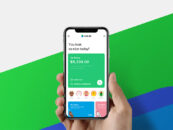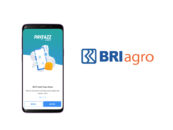
India, Singapore, Hong Kong Among Top 5 Biggest Adopters of Digital Banking
by Fintech News Singapore October 11, 2023Consumers in India, Singapore and Hong Kong are among the world’s biggest adopters of digital banking, ranking second, fourth and fifth respectively in penetration rate, a global study conducted by Australian comparison website Finder found.
The study, which polled more than 24,000 adults across 14 countries and regions in 2022, found that 26% of respondents in India owned a digital banking account last year, a rate that stands at 21% in Singapore and 20% in Hong Kong.
The metrics make these three Asian countries among the top five biggest users of digital banking, alongside Brazil, the world leader at 43%, and Ireland, which ranked third at 22%.

The percentage of adults with a digital only bank account in 2022 and the percentage that will have one by 2027, Source: Finder, 2022
Digital banking adoption is growing at a faster pace in emerging markets like India and Singapore than developed markets owing to these countries’ younger populations, larger proportion of unbanked or underbanked people, as well as skyrocketing mobile phone adoption.
In India, neobanking is booming, reaching a value of US$3.42 billion in 2022, accounting and consulting firm Grant Thornton estimates. Through 2025, the market is expected to grow at a compound annual growth rate (CAGR) of 50.5% to reach US$11.65 billion.

Projected Indian neobank market size (by revenue) in US$ billion, Source: The banking matrix: Emergence of open and integrated neobanks, Grant Thornton Bharat, July 2022
In Singapore, the central bank launched a digital banking licensing framework back in 2019 and has so far granted licenses to four entities. GXS Bank, a joint venture between Singapore Telecommunications (Singtel) and ride-hailing company Grab and one of the city-state’s four digital banks, reported in April 2023 that it had almost reach SGD 50 million (US$37 million) in retail deposits.
Trust Bank, which launched in September 2022 through a partnership with Standard Chartered and FairPrice Group, says that more than 600,000 customers have already signed up for its digital bank.
In Hong Kong, where eight licensed digital banks are currently in operation, the total combined gross loans offered by these companies increased significantly from HKD 6 billion (US$767 million) in December 2021 to HKD 16 billion (US$2 billion) in December 2022, data from KPMG show. These digital banks, which started operations in 2020, cumulated a total of 1.7 million virtual banking accounts in October 2022.

Hong Kong virtual banks loans and deposits (HKD million), Source: KPMG, June 2023
The Philippines to witness the highest rise in neobank adoption
While India, Singapore and Hong Kong stand among the world’s biggest adopters of digital banks, the Philippines is actually the country that’s expected to see the strongest growth in neobanking adoption this year onwards.
An analysis by UK-based industry group Payments Association found that the Southeast Asian country is set to see 32% of its population using neobanking by 2027, a figure which suggests a 161% increase from the adoption rate observed in 2023 of 13%.

Which countries are adopting neobanking fastest, Source: The Payments Association, Sep 2023
The Philippines introduced a framework for the licensing of digital banks in 2020, subsequently handing a license to GoTyme, Maya, Overseas Filipino Bank (OFBank), Tonik, UnionDigital Bank and UNOBank.
Since then, these ventures have recorded notable growth. UnionDigital Bank recently reached PHP 13 billion (US$228 million) in loans disbursed; GoTyme onboarded its 1 millionth customer in August; and Tonik achieved unit profitability this year.
Maya, meanwhile, swept a number of banking awards earlier this month. At the Retail Banking Awards 2023, the digital bank was awarded the Virtual Bank of the Year for the Philippines, while at the World’s Best Consumer Digital Bank Awards 2023, it was named the Best Consumer Digital Bank and the Best Mobile Banking App for the Philippines.
Maya, which provides a wide range of financial services via a single digital platform for both individual consumers and businesses, had gathered 2.3 million deposit accounts with a collective balance of PHP 24.9 billion (US$437 million), as of the end of June 2023.
The introduction of the digital banking framework in the Philippines is intended to help the Bangko Sentral ng Pilipinas (BSP) reach its goal of bringing 70% of Filipinos into the formal banking system and have 50% of transactions done online by the end of 2023.
In 2022, the share of digital payments in the country’s total retail transactions increased to 42.1% from 30.3% in 2021, data from the BSP show. Meanwhile, the proportion of banked population rose at about 56% of all Filipino adults in 2021, up from just 29% in 2019.
Featured image credit: edited from freepik





